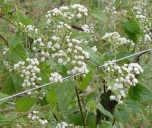– Al Gahler, OSU Extension Educator, Sandusky County (originally published in the Ohio Farmer on-line)
The end of the growing season is near, and for cattle producers in Ohio, that means the beginning of the season that challenges the profitability of a cow/calf operation more than any other aspect. That’s right, feeding a cow through the winter is the number one cost of production, and the days of $2.50 and higher feeder calves that made it pretty easy to pay the winter feed bill are a fond but distant memory. The difference between the producer that has had and will have continued success in a slightly different economic climate and the ones who have and will struggle, will come down to management. Not just marketing management, but input management, or in other words, feed and nutrition.
Most anyone involved in agriculture in Ohio has very likely heard about the concept of 4R management in agronomic crop production in order to preserve the soil and ensure water quality – using the ‘right’ fertilizer or pesticide product, putting it in the ‘right’ place, at the ‘right’ rate, at the ‘right’ time. The cattle producer who will be the most Continue reading The 4 R’s of Feeding the Cow Herd


